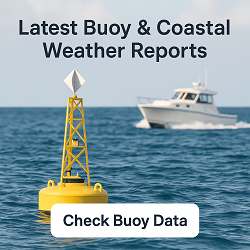Cayce, SC Weather Forecast and Current Conditions
Current Conditions From Nearby Local Station

Feels Like 33°F
at
Point Forecast at a Glance







7-Day Temperature Trend
Week Ahead Summary
High temperatures start near 59°F, reaching 65°F before cooling to 40°F, then recovering to 59°F by week's end. Some rain possible with at least 2 days showing precipitation chances of 20% or higher.
Climate Context
This week's forecast shows temperatures running 2°F below the historical average for December. Normal highs for this period are around 59°F with lows around 36°F.
This Date in Weather History
1988 - Arctic cold invaded the central and eastern U.S. Sault Ste Marie MI reported a record low of 14 degrees below zero, and International Falls MN was the cold spot in the nation with a low of 25 degrees below zero. Temperatures remained below zero all day over parts of eastern Upper Michigan and northern New England.
Cayce, SC 7 Day Weather Forecast Details
Thursday Dec 11

Night: Mostly clear, with a low around 32. Calm wind.
Friday Dec 12

Day: Sunny, with a high near 59. Calm wind becoming southwest around 6 mph in the afternoon.

Night: Mostly clear, with a low around 36. Calm wind.
Saturday Dec 13

Day: Sunny, with a high near 65. Light southwest wind.

Night: A chance of rain after 1am. Partly cloudy, with a low around 47. Calm wind becoming west around 5 mph after midnight. Chance of precipitation is 30%.
Sunday Dec 14

Day: A slight chance of rain before 1pm. Mostly sunny, with a high near 57. Chance of precipitation is 20%.

Night: Clear, with a low around 17.
Monday Dec 15

Day: Sunny, with a high near 40.

Night: Clear, with a low around 23.
Tuesday Dec 16

Day: Sunny, with a high near 52.

Night: Mostly clear, with a low around 32.
Wednesday Dec 17

Day: Mostly sunny, with a high near 59.

Night: Partly cloudy, with a low around 42.
Thursday Dec 18

Day: Mostly sunny, with a high near 67.
About Cayce, SC
Content from Wikipedia, licensed under CC BY-SA 3.0.
How We Provide Better Local Weather
Current conditions: We use the nearest available station to your location - including professional MESONET/MADIS and local weather stations - often miles closer than regional airports.
Forecasts: National Weather Service point forecasts predict for your specific area, not broad regional zones, making them far more relevant to your location.



